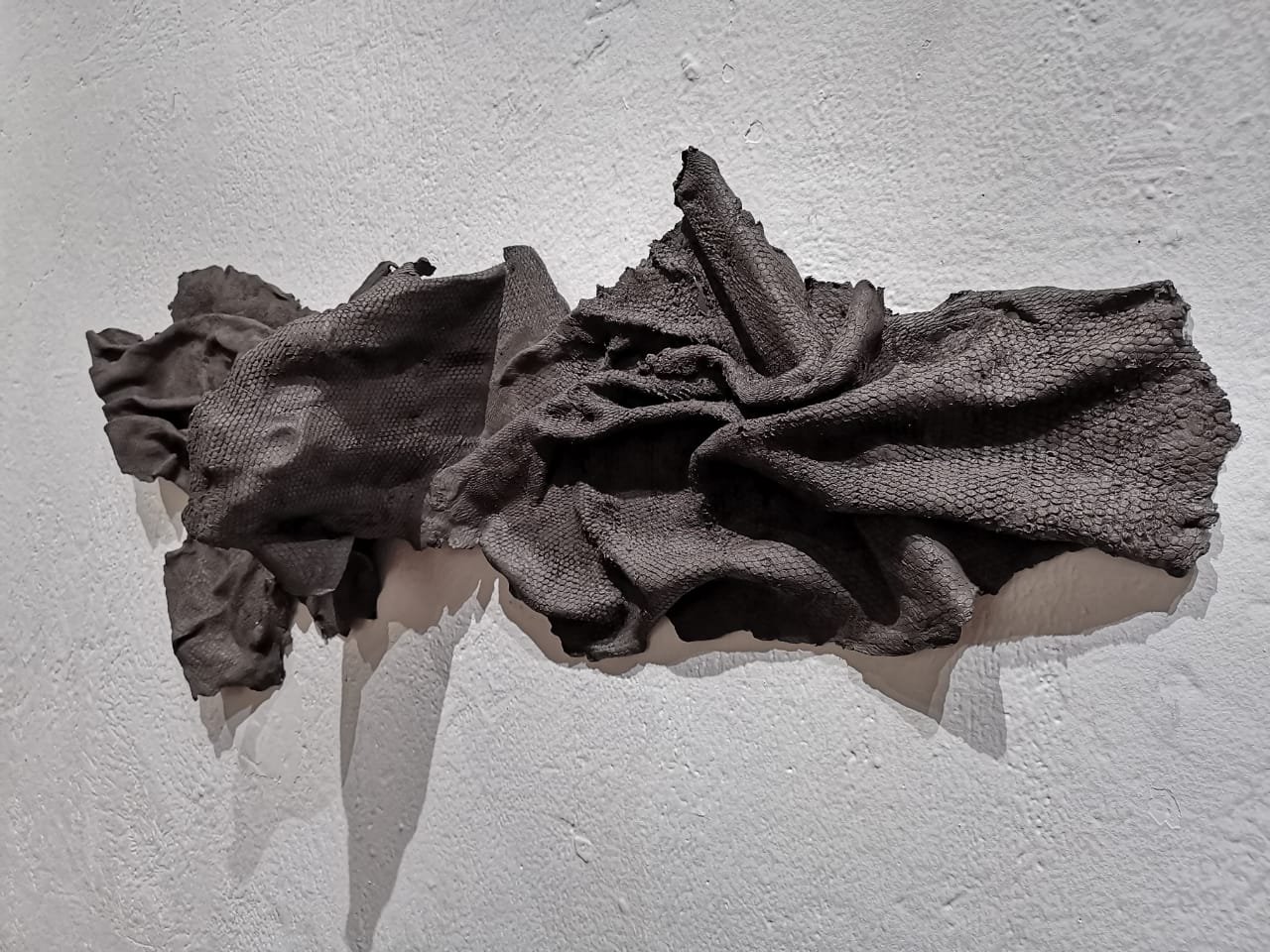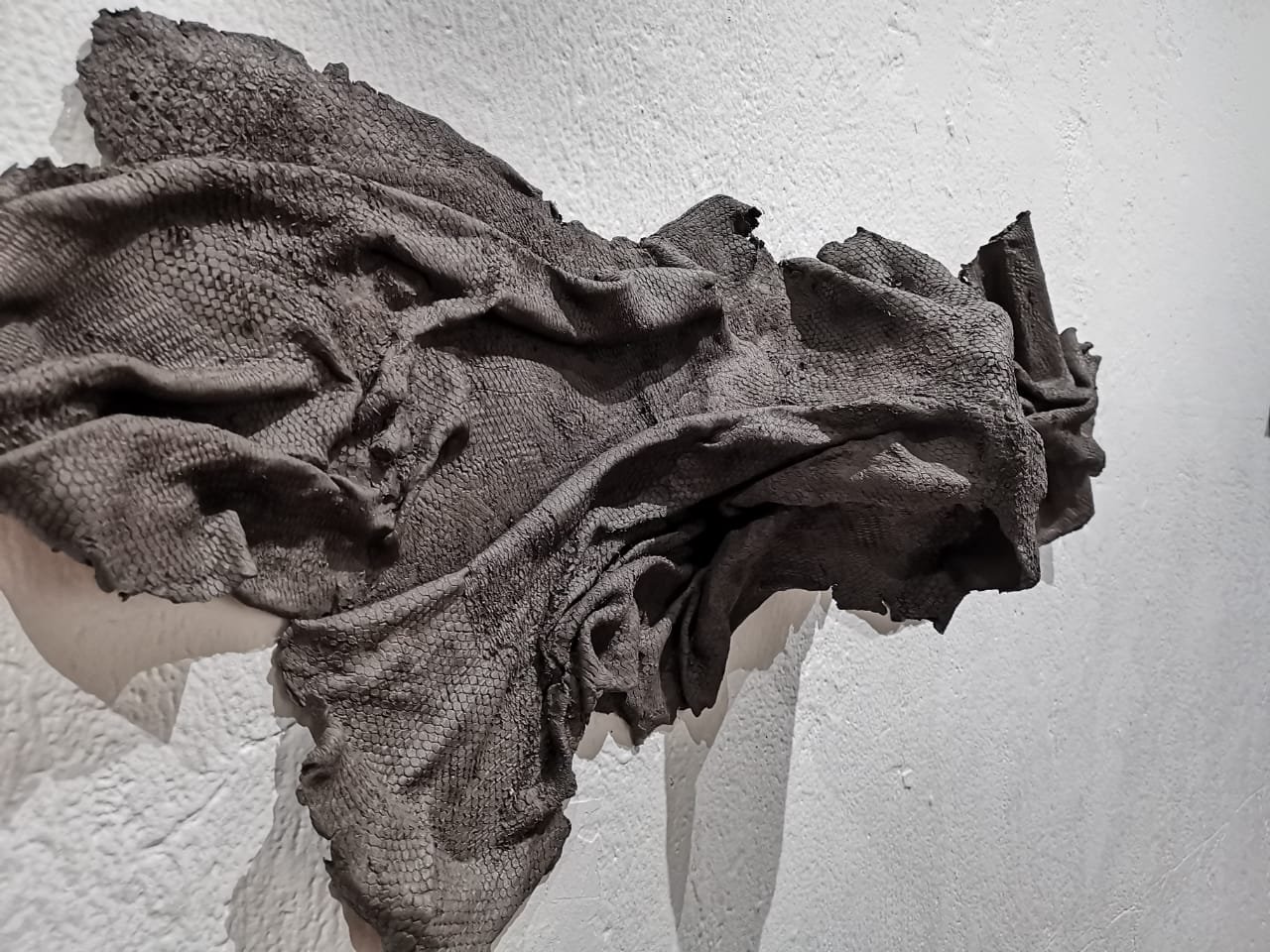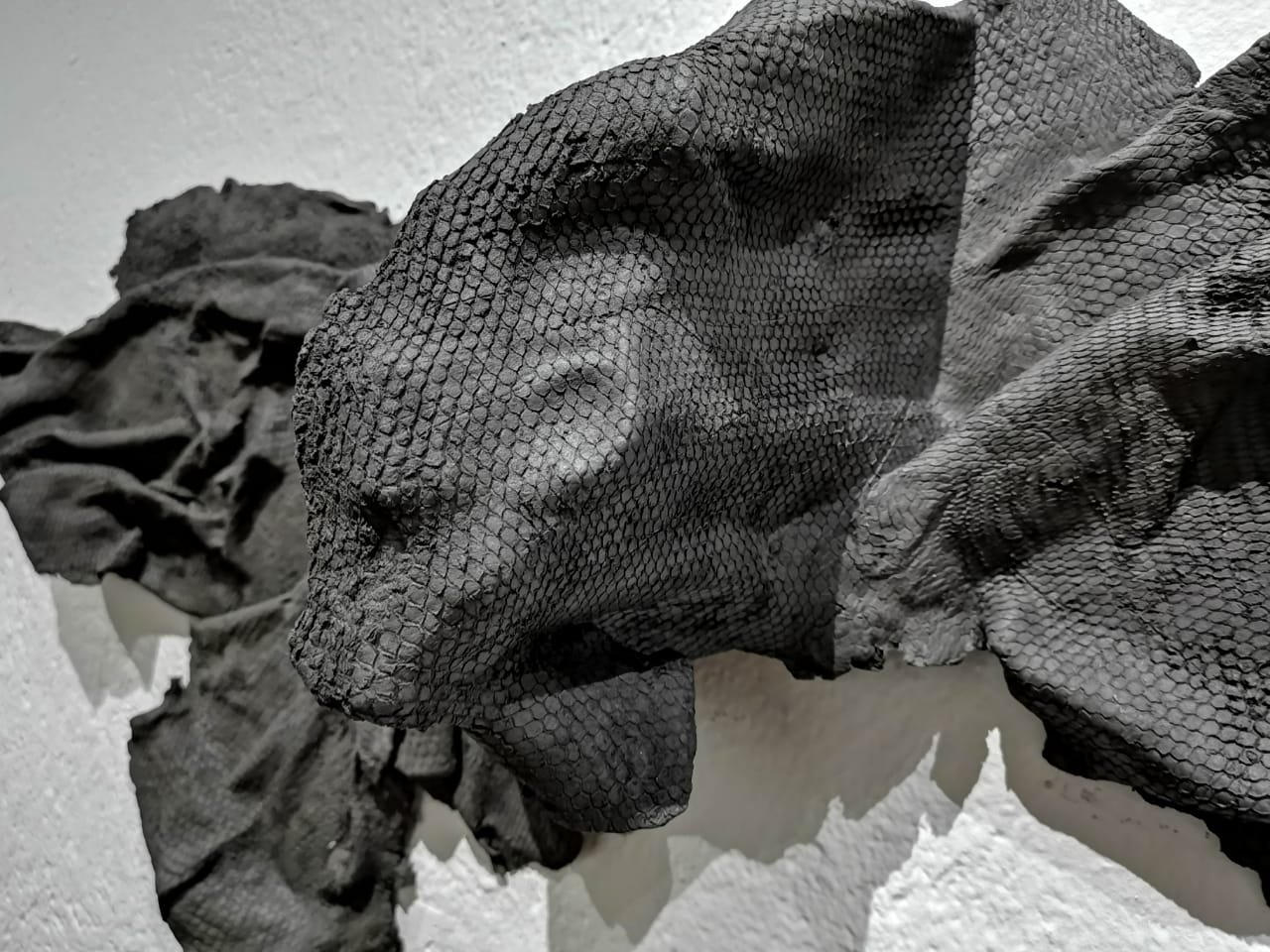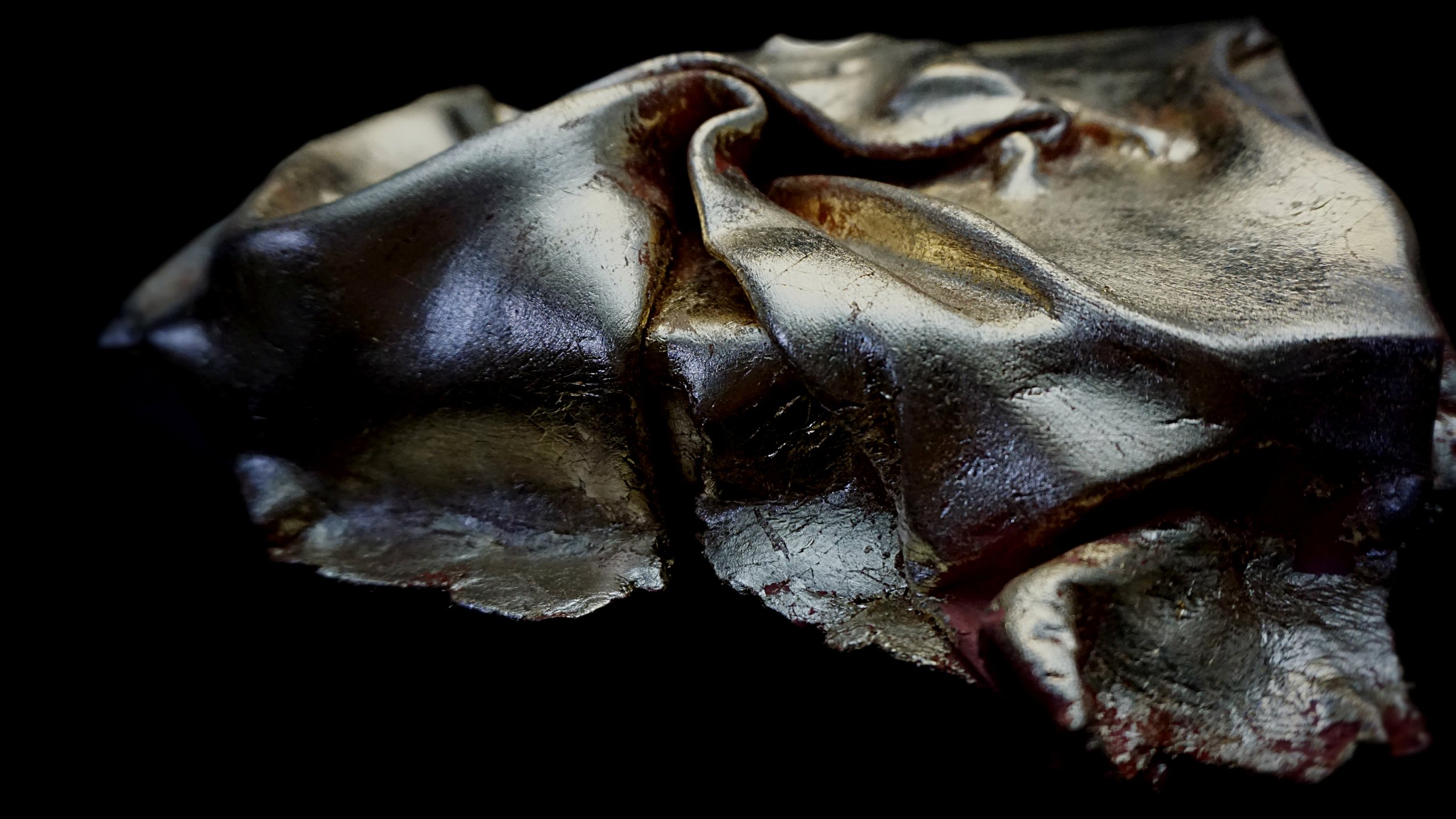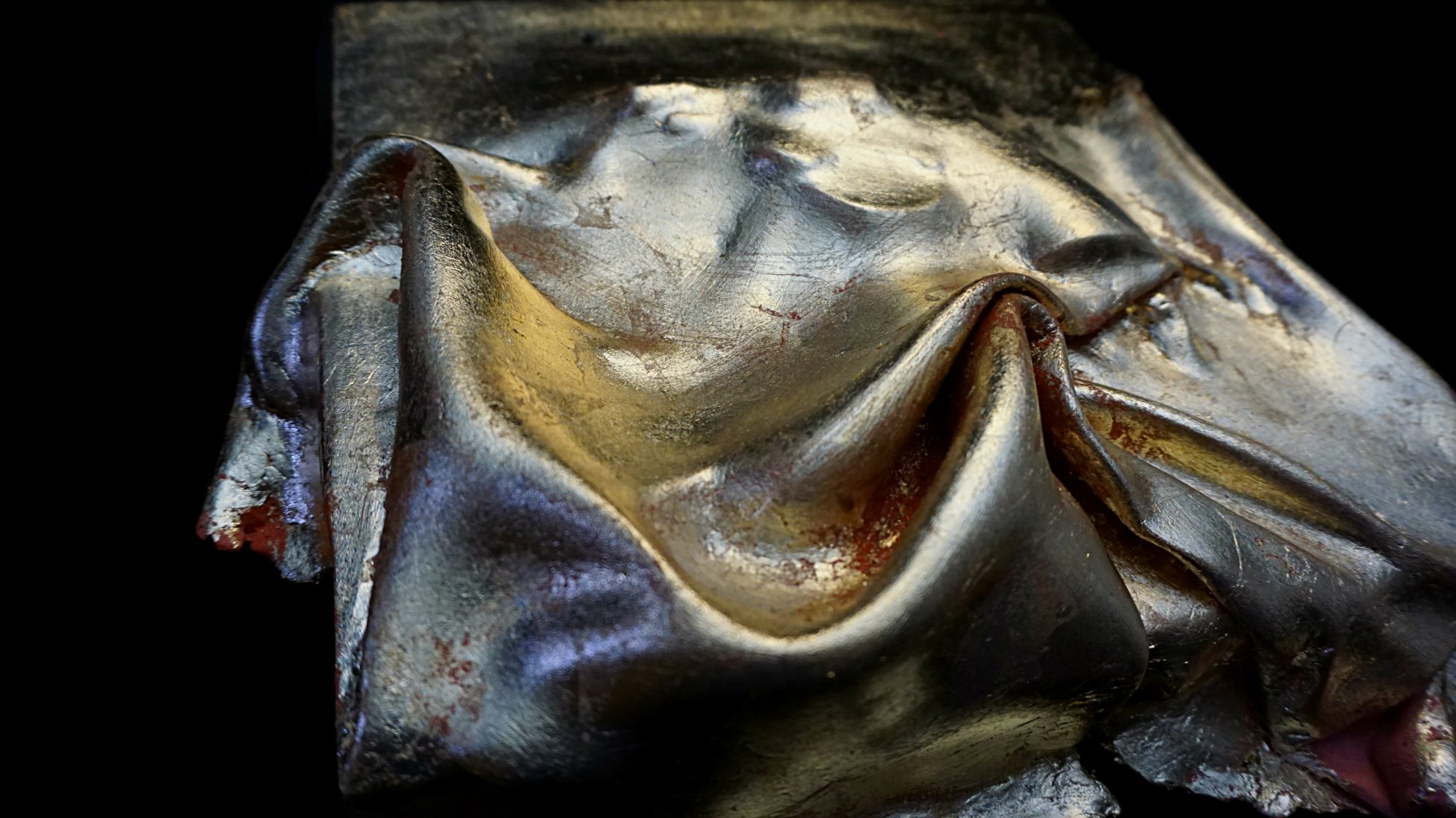BLACK FLAG
It is an object-pictorial installation presented as part of the collective exhibition "Las que habitan su territorio," curated by Maya Juracán and Marilyn Boror Bor. This individual installation was set up in the former post office building within the Alvaro Arzú Municipal Museum in Guatemala City. In this project, the absence of the object generating one of the most impactful narratives in Central America was explored: firearms.
After the civil war in El Salvador, many weapons from the armed conflict remained in circulation, despite the efforts of the military to implement disarmament agreements. Some of these weapons, of Soviet origin, ended up being used by gangs during their process of structuring and settling in the region. The artist created a series of sculptures in low-fired clay, pigmented with natural tones, simulating draped fabrics concealing various firearms mounted directly on the wall.
These sculptures, appearing soft and snake-skin textured, revealed weapons of different calibers and types once the fabric was removed. In the center of the room, there was a sculpture pedestal with a revolver covered by one of these fabrics, hanging or extending across the walls of the pedestal. Using paint, the shadow of this revolver was projected and extended from the base of the pedestal, covering the floor, two walls, and the ceiling of the exhibition room. An imposing black shadow of a perfect revolver, the shadow of the weapon hidden beneath the fabric-sculpture, manifested in an intriguing visual play.
To fully appreciate the revolver, the viewer had to be in a specific viewpoint within the room. Otherwise, a fascinating and aesthetically interesting abstract composition unfolded on the walls of the room, without revealing its nature as a weapon. "Black Flag" invites reflection on the power of concealment, the contrast between the visible and the invisible, and the complexities of the narrative of firearms in Central America.

